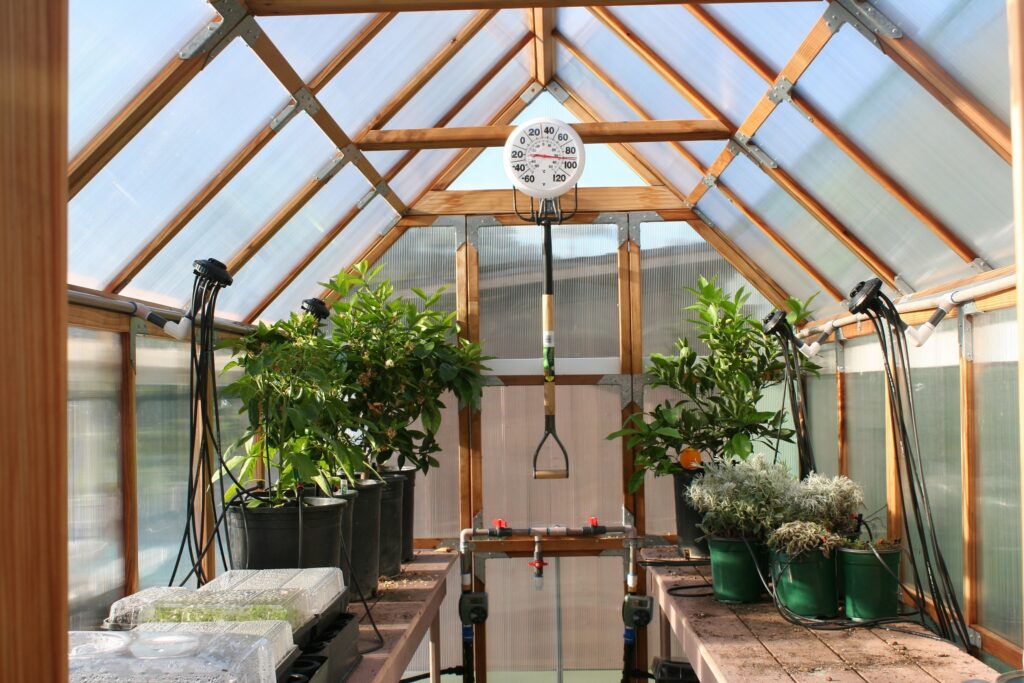Building a Greenhouse
It Feels Like Home!

Growing Green: Tips for Building A Greenhouse.
Building a greenhouse is an exciting project that offers countless benefits for gardening enthusiasts, from extending the growing season to providing a controlled environment for nurturing plants year-round. However, constructing a greenhouse with sustainability in mind can elevate the experience even further, minimizing environmental impact while maximizing energy efficiency and productivity. In this article, we’ll explore essential tips for building your own eco-friendly greenhouse, empowering you to create a thriving oasis for your plants while treading lightly on the planet.
Choose Sustainable Materials:
- Opt for eco-friendly building materials such as sustainably sourced wood, recycled plastic, or reclaimed materials whenever possible.
- Select materials with high thermal mass and insulation properties to regulate temperature and reduce heating and cooling costs.
- Consider using translucent polycarbonate panels or double-glazed glass for the walls and roof to maximize natural light while minimizing heat loss.
Design for Energy Efficiency:
- Prioritize energy-efficient design features such as passive solar heating, natural ventilation, and strategic placement to optimize sunlight exposure.
- Position the greenhouse to face south to capture maximum sunlight throughout the day, minimizing the need for artificial lighting and heating.
- Install operable windows, louvers, and roof vents to facilitate cross ventilation and regulate temperature and humidity levels inside the greenhouse.
Integrate Renewable Energy Sources:
- Harness the power of renewable energy sources such as solar panels, wind turbines, or geothermal systems to reduce reliance on conventional energy sources.
- Install solar panels on the roof of the greenhouse to generate clean, renewable electricity for powering lighting, fans, heaters, and other equipment.
- Explore options for passive solar heating, such as thermal mass walls or underground heat storage, to supplement heating during colder months.
Implement Water-Saving Techniques:
- Incorporate water-saving features such as rainwater harvesting systems, drip irrigation, and water-efficient fixtures to conserve water and reduce waste.
- Collect rainwater from the greenhouse roof and store it in barrels or tanks for irrigation, reducing reliance on municipal water supplies.
- Use mulch and moisture-retentive soil amendments to improve water retention and reduce evaporation, promoting healthy plant growth while conserving water.
Embrace Sustainable Gardening Practices:
- Adopt organic gardening methods, companion planting, and crop rotation to promote soil health, biodiversity, and pest management without relying on synthetic chemicals.
- Compost organic waste from the greenhouse, such as plant trimmings and kitchen scraps, to create nutrient-rich soil amendments and reduce landfill waste.
- Practice water-wise gardening techniques such as xeriscaping and drought-tolerant plant selection to minimize water consumption while maintaining a lush and vibrant garden.
Prioritize Durability and Longevity:
- Invest in high-quality construction materials and durable greenhouse components to ensure longevity and minimize the need for frequent repairs or replacements.
- Choose corrosion-resistant hardware, UV-stabilized glazing materials, and weatherproof seals to withstand exposure to the elements and maintain structural integrity over time.
- Regularly inspect and maintain the greenhouse structure, equipment, and systems to prevent damage, prolong lifespan, and optimize performance.
Building a greenhouse is not only a rewarding endeavor but also a sustainable investment in the future of your garden and the planet. By incorporating sustainable materials, energy-efficient design features, renewable energy sources, water-saving techniques, and organic gardening practices, you can create a thriving oasis that nurtures plants, conserves resources, and minimizes environmental impact. With careful planning, innovation, and commitment to sustainability, your greenhouse can become a model of green living and a source of inspiration for generations to come.
